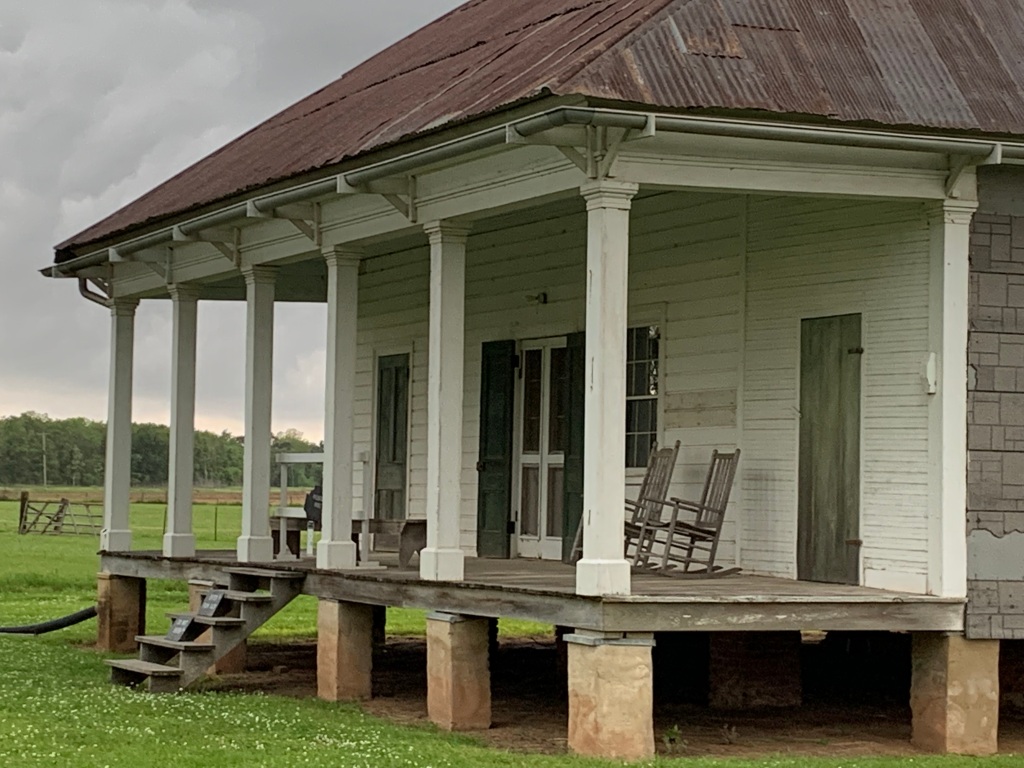
There was a storm coming when I took this photo of the Overseer’s House on Oakland Plantation which may help convey the dark, menacing sense of the place. I visited Magnolia Plantation years ago with my kids, and I remember the slave huts. This plantation illustrates a later period when most farms employed day laborers, but here they still had tenant farmers. The ranger euphemistically explained that they were technically “day laborers who just happened to live on the plantation”. The sign on the iron gate dates Oakland to 1821, but that’s just when the cotton plantation was renamed. The French first used slaves to plant cotton here in the 1790’s.
This site has poor signage, marking several places you can’t park but no entry sign for the actual parking lot around back. So I ended up driving around more than expected, and I noticed some African Americans living in run-down shacks right down the street from large new plantation-style homes complete with landscaped grounds, wrap-around porches and white colonnades. I think it shows an abysmal lack of sensitivity to or remorse over the centuries of mistreatment of slaves and laborers to intentionally choose to live in a plantation style house here, especially before investing in decent housing for the descendants of the victims.
Pingback: My favorites after visiting over 100 park units | Zero Carbon Travel
Pingback: All Parks in the Southwest, Zero Carbon | Zero Carbon Travel
Pingback: The Old Spanish Trails | Zero Carbon Travel
Pingback: All Labor Sites, Zero Carbon | Zero Carbon Travel